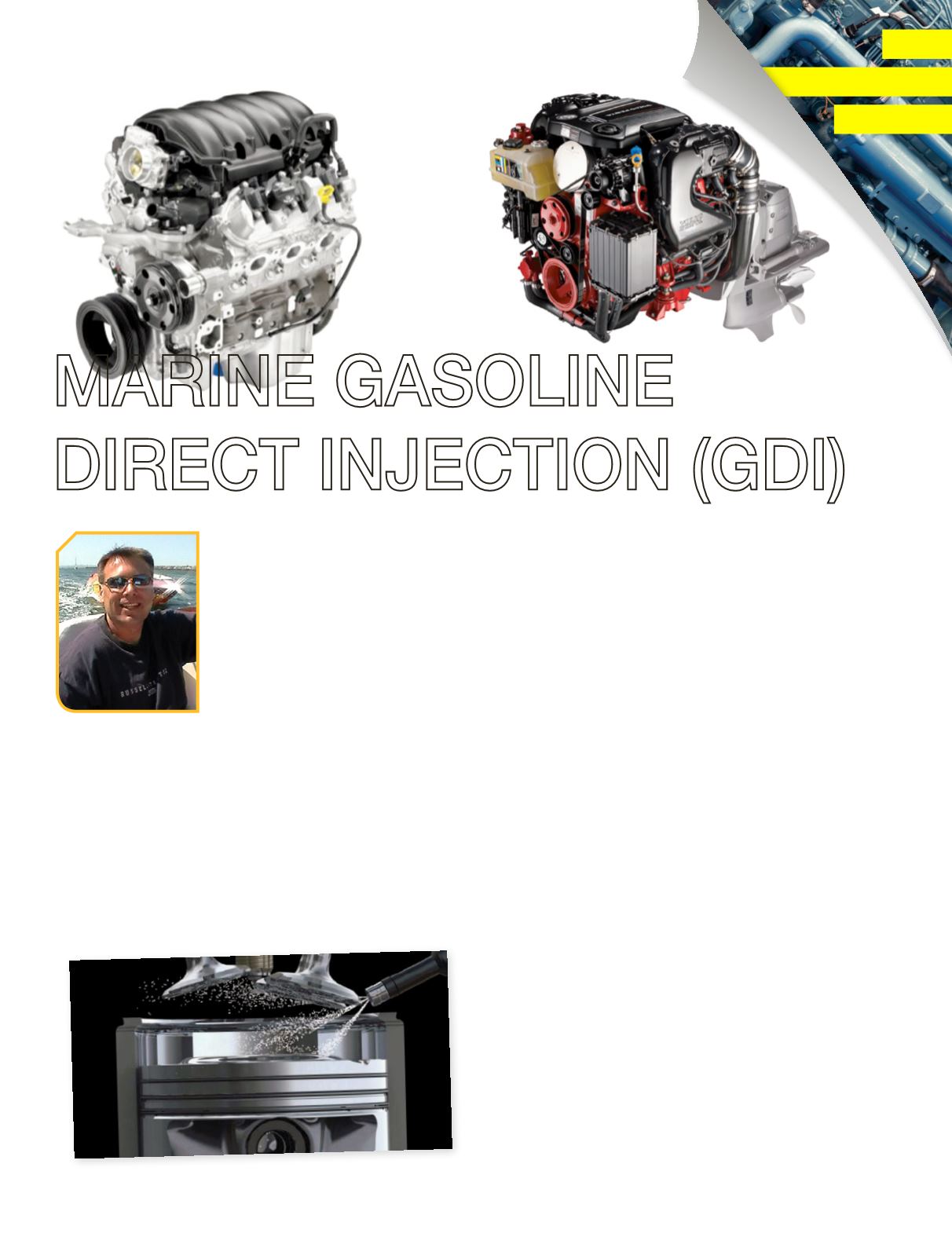
q
GM Marine 4.3 liter
direct injection engine
p
Volvo Penta
4.3 direct injection
240 hp engine & drive
SUMMER 2015 | MARINE TECHNICIANTODAY
19
THE
PERFORMANCE
CORNER
2
015
has proved to be a very busy
year regarding the introduction
of new technology by the
inboard marine engine and outdrive
manufactures. Volvo Penta introduced a
forward facing twin propeller outdrive for
their marine gasoline engines in February
called Volvo Penta Forward Drive (FWD).
Volvo Penta has also introduced a new
GDI engine that is a General Motors V-6,
4.3L, 262 CID all aluminum engine block, weighing 41 lbs. less than
the older cast iron block. It can turn up to a whopping 5800 RPM!
They have added strength to the bottom end and for the crankshaft
by using 6 bolt powdered metal main caps. The engine is also offered
with variable valve timing, and a hydraulic cam phaser for variable
camshaft timing. This optimizes low end torque and high end horse
power. The ignition system has 6 ignition coils near the spark plugs.
The most significant change for Volvo Penta was the move from multi-
port fuel injection to gasoline direct injection (GDI). With GDI atomized
fuel enters the combustion chamber at 2250 psi. The engine has a
compression ratio of 11:1, which until now was unheard of for a stock,
pump gas compatible marine engine. Higher compression ratios create
a cleaner fuel burn in the cylinders resulting in reduced emissions so
more energy comes from each drop of fuel.
Since 4-stroke marine gasoline direct injection engines have not been
in service until now, marine technicians need to be aware of what sort
of maintenance is needed and what problems can happen that would be
different than carbureted or EFI engines. To further investigate we need
to examine what is happening in the automotive field in regards to GDI.
GDI has been around in its current form since about 1997. When these
early direct injection automotive engines hit approximately 30,000
miles many would develop engine running problems due to carbon
build up on the necks of the intake valves. Typical symptoms were
misfire codes, rough idle, stumbling and fuel trim problems. Carbon
deposits caused the incoming intake air to tumble into the combustion
chamber and this turbulence caused uneven distribution of the fuel
& air mixture. When ignited, the flame front can be erratic leaving
unburned fuel and create hot spots in the combustion chambers. This
brings the question, why are direct injection engines prone to carbon
deposits? The main reason is that the fuel, specifically the detergents
in the fuel, are no longer passing by the intake valves keeping them
clean of deposits. Remember, there is no longer any fuel passing
through the intake manifold, only air. The fuel is injected directly into
the combustion chamber. Another issue causing the problem is the
higher compression ratios of these engines. Higher compression ratio’s
cause higher combustion pressures, and direct injection engines have
leaner air to fuel ratios, making carbon deposits worse over time.
A GDI engine produces more energy from a given amount of fuel and
air than a multi-port fuel injected engine. Marine GDI engines, especially
ones run on poor quality fuel or ones that are poorly maintained can be
operating on the ragged edge of running lean or misfiring. When a cylinder
does not fire properly, combustion by-products are left in the cylinder.
p
Direct injector spraying fuel into combustion chamber
MARINE GASOLINE
DIRECT INJECTION (GDI)
By John Mosetti


